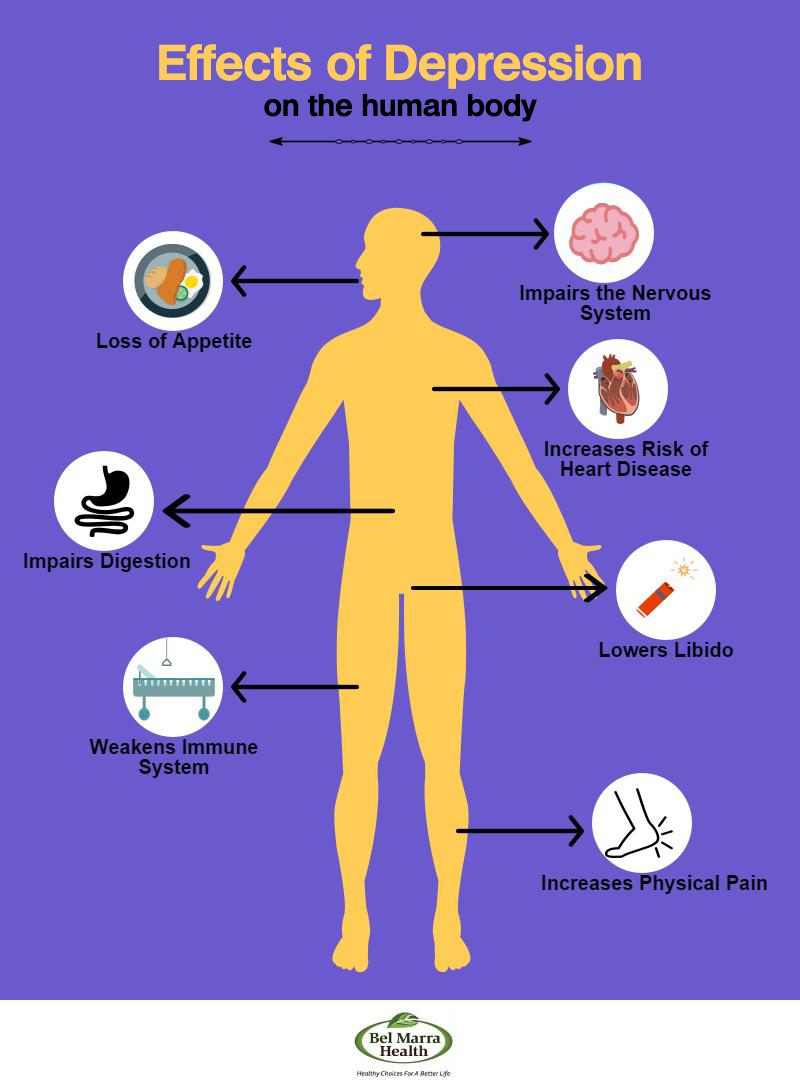Imagine a life where every breath feels like an uphill battle, where the beating of your heart becomes uncertain, and even the simplest movements elude your control. This is the reality faced by individuals who sustain major injuries to the medulla, a critical part of the brain responsible for vital bodily functions. In this article, we delve into the profound impact of medullary injuries, exploring their causes, symptoms, treatment options, and the path to recovery. Brace yourself for an eye-opening journey into the world of the medulla and the challenges faced by those affected.
In this article, we aim to shed light on the consequences of major injuries to the medulla, where a single blow or a medical condition can disrupt the delicate balance of life-sustaining functions. We’ll uncover the immediate and long-term effects such injuries can have on breathing, heart rate, sensation, motor control, and overall quality of life. Whether you’re seeking knowledge for personal reasons or to better understand the struggles faced by someone you care about, this concise yet comprehensive overview will provide valuable insights.
Join us as we navigate the intricate web of the medulla’s role in our bodies, uncover the causes behind major injuries, and explore the symptoms that may arise. From medical assessments to potential treatment options, we’ll delve into the approaches taken to help individuals on their path to recovery. Moreover, we’ll address the emotional challenges and coping strategies involved in adapting to a life altered by medullary injuries. Prepare to gain a deeper understanding of the medulla’s significance and the profound impact it has on human existence.
Understanding the Medulla
The medulla, located in the brainstem, is a crucial component of the human brain that plays a vital role in regulating various essential bodily functions. Nestled within the hindbrain, this small but mighty structure serves as the command center for numerous life-sustaining processes. Understanding the medulla is paramount to comprehending its significance in our overall well-being.
The medulla’s intricate structure consists of nerve fibers, nuclei, and pathways that facilitate its diverse functions. Serving as the bridge between the brain and spinal cord, it relays sensory and motor information, ensuring seamless communication throughout the body. This neural superhighway acts as a conduit for signals traveling to and from the brain, enabling our bodies to respond swiftly to stimuli and coordinate complex actions.
One of the medulla’s primary responsibilities lies in regulating our respiratory system, ensuring the rhythmic and efficient process of breathing. As the central control center for respiration, it oversees the coordination of our diaphragm, intercostal muscles, and other respiratory structures. Through this intricate dance, the medulla ensures the adequate exchange of oxygen and carbon dioxide, a fundamental process that sustains our existence.
Furthermore, the medulla exercises its influence over the cardiovascular system, governing our heart rate and blood pressure regulation. It acts as a vigilant conductor, orchestrating the ebb and flow of blood through our arteries and veins. By monitoring and adjusting our heart rate and vessel constriction, the medulla maintains optimal blood flow, essential for the nourishment of our organs and tissues.
In addition to its respiratory and cardiovascular duties, the medulla also oversees an array of reflex actions. These automatic responses, such as coughing, sneezing, swallowing, and vomiting, are orchestrated by the medulla to protect and maintain the integrity of our bodies. When confronted with a potential threat or imbalance, the medulla swiftly triggers these reflexes, safeguarding us from harm and preserving our overall well-being.
The medulla’s significance extends beyond its direct control over bodily functions. Its intricate network of connections enables the relay of sensory and motor information between the brain and spinal cord. Sensory signals, such as touch, pain, and temperature, are received by the medulla and transmitted to the appropriate regions of the brain for interpretation. Likewise, the medulla coordinates the motor commands sent from the brain, guiding our voluntary movements and ensuring their smooth execution.
In conclusion, the medulla serves as a pivotal player in our physiological symphony, orchestrating the harmonious interplay of essential bodily functions. Its location within the brainstem and its intricate structure enable the control and regulation of processes such as respiration, cardiovascular function, reflex actions, and the relay of sensory and motor information. Understanding the medulla’s multifaceted role is crucial for appreciating the complex mechanisms that underpin our existence. As we continue to unravel the mysteries of the brain, our appreciation for the medulla’s indispensable contributions deepens, reminding us of the extraordinary nature of the human body.
Causes of Major Injuries to the Medulla
When it comes to major injuries to the medulla, understanding the causes is paramount in preventing and addressing these critical situations. Various factors can contribute to significant damage to the medulla, disrupting its crucial role in regulating vital bodily functions. By exploring the common causes of medullary injuries and emphasizing the importance of prompt medical attention, we can shed light on this topic and raise awareness for better preventive measures.
Trauma from accidents, falls, or sports-related incidents stands as one of the primary causes of major injuries to the medulla. In the blink of an eye, an unfortunate event can lead to severe damage in this delicate region of the brain. Whether it’s a high-impact collision, a fall from a significant height, or a sports-related accident, the force exerted on the medulla can result in life-altering consequences. The sheer unpredictability of such events highlights the need for caution and preventive measures in our daily lives.
In addition to external trauma, certain medical conditions can also contribute to significant damage in the medulla. Strokes, for instance, can cause blockages or ruptures in blood vessels supplying the brain, leading to oxygen deprivation and subsequent harm to the medulla. Tumors, whether originating from the medulla itself or nearby structures, can exert pressure and impair the normal functioning of this critical brain region. These medical conditions underscore the importance of regular health check-ups, early detection, and timely intervention to minimize the risk of medullary injuries.
Prompt medical attention and interventions are crucial when it comes to medullary injuries. Time is of the essence in mitigating the potential damage and optimizing the chances of recovery. Seeking immediate medical help after an accident or trauma can make a significant difference in the outcome. Timely interventions, such as stabilization, diagnostic imaging, and surgical procedures, may be necessary to alleviate the impact on the medulla and prevent further complications. The collaboration between emergency medical services, healthcare professionals, and the injured individual is pivotal in ensuring the best possible outcome.
By understanding the common causes of major injuries to the medulla, we can take proactive measures to minimize the risks. Safety precautions, such as wearing protective gear during sports activities, practicing good posture and balance, and avoiding reckless behavior, can significantly reduce the likelihood of accidents leading to medullary injuries. Regular health check-ups, especially for individuals with underlying medical conditions, can aid in early detection and prompt management of issues that may affect the medulla.
Effects and Symptoms

Sustaining major injuries to the medulla can have profound effects on an individual’s well-being, impacting various bodily functions and leading to a range of symptoms. Understanding these effects and symptoms is crucial in comprehending the challenges faced by individuals with medullary injuries and providing appropriate care and support. From immediate and short-term consequences to long-term complications, the repercussions of medullary injuries can be significant and life-altering.
Immediately after sustaining major injuries to the medulla, individuals may experience a variety of effects and symptoms. Difficulty breathing is a common occurrence, as the medulla plays a critical role in regulating respiration. The disruption of this control center can lead to labored breathing, shortness of breath, and potentially even respiratory failure. Similarly, the medulla’s involvement in heart rate regulation may result in a disrupted heart rhythm, leading to palpitations, irregular heartbeat, or even cardiac arrest.
Loss of sensation or motor control is another prominent consequence of medullary injuries. The medulla serves as a gateway for sensory and motor signals between the brain and spinal cord, and damage to this region can disrupt the transmission of these signals. This disruption may manifest as numbness, tingling, or even complete loss of sensation in various parts of the body. Motor control impairment can range from weakness or partial paralysis to complete loss of voluntary movement, depending on the severity and extent of the injury.
Impaired reflexes are also prevalent in individuals with medullary injuries. Reflex actions, such as coughing, sneezing, and swallowing, rely on the proper functioning of the medulla. Damage to this vital brain region can result in a diminished or absent reflex response, affecting the body’s ability to protect and maintain itself. This may lead to difficulties in clearing the airways, swallowing food or liquids, and responding effectively to potential hazards.
The long-term effects of major injuries to the medulla can be far-reaching and impact daily activities and overall quality of life. Challenges with activities of daily living, such as eating, dressing, and personal hygiene, may arise due to motor impairments or the need for assistance with basic functions. In more severe cases, individuals may experience partial or complete paralysis, significantly limiting their mobility and independence. The impact on communication and cognitive functions can also be significant, affecting speech, memory, and overall cognitive abilities.
In some instances, major injuries to the medulla can lead to life-threatening complications. As the medulla controls essential bodily functions, severe damage in this region can result in respiratory failure, cardiac arrest, or other critical conditions. These life-threatening situations require immediate medical intervention and close monitoring to ensure the individual’s survival and stabilization.
Medical Assessment and Treatment
When it comes to assessing and treating medullary injuries, a comprehensive approach is essential to ensure accurate diagnosis and effective management. Diagnostic procedures play a crucial role in evaluating the extent of the injuries, while tailored treatment plans address the specific needs of each individual. From physical examinations and imaging tests to various treatment options, a multidisciplinary approach is key to providing optimal care for medullary injuries.
Diagnostic procedures are the cornerstone of assessing medullary injuries, enabling healthcare professionals to gather vital information about the extent and nature of the damage. Physical examinations serve as the initial step, allowing healthcare providers to assess symptoms, evaluate reflexes, and identify any visible signs of injury. These examinations provide valuable insights into the overall health of the patient and aid in determining the appropriate next steps for diagnosis and treatment.
Imaging tests play a crucial role in visualizing the medulla and identifying potential injuries. Magnetic Resonance Imaging (MRI) and Computed Tomography (CT) scans are commonly used to provide detailed images of the brain and the medulla specifically. These imaging techniques can help identify structural abnormalities, such as hemorrhages, lesions, or tumors, that may be contributing to the medullary injuries. By visualizing the extent of the damage, healthcare professionals can make informed decisions regarding treatment options.
Neurological assessments are also integral in evaluating medullary injuries. These assessments involve a series of tests and examinations that evaluate the functioning of the nervous system, including sensory perception, motor control, and reflexes. By conducting neurological assessments, healthcare professionals can gain further insights into the specific impairments caused by the medullary injuries and tailor treatment plans accordingly.
A comprehensive treatment plan is crucial in addressing medullary injuries and maximizing the chances of recovery. Given the complex nature of these injuries, treatment plans are often multidisciplinary and involve collaboration between various healthcare professionals. The plan should be tailored to the individual’s specific injuries, needs, and overall health status. It should encompass a range of approaches aimed at addressing the immediate and long-term effects of the injuries.
Treatment options for medullary injuries may vary depending on the severity and nature of the damage. In some cases, surgery may be necessary to alleviate pressure on the medulla or repair structural abnormalities. Medications can also play a role in managing symptoms and promoting healing. Physical therapy and rehabilitation programs are integral in assisting individuals with medullary injuries in regaining function, improving mobility, and enhancing overall quality of life. These programs often include exercises, specialized therapies, and assistive devices to support the recovery process.
Rehabilitation and Recovery

Rehabilitation plays a crucial role in the recovery process for individuals with medullary injuries, offering them the opportunity to regain function, independence, and enhance their overall quality of life. Through a combination of specialized therapies, assistive devices, and adaptive strategies, rehabilitation aims to address the specific impairments caused by medullary injuries and maximize the individual’s potential for recovery.
Physiotherapy, or physical therapy, is a cornerstone of rehabilitation for individuals with medullary injuries. This discipline focuses on restoring and improving physical function through exercises, stretches, and other techniques. Physiotherapists work closely with patients, developing customized treatment plans to target specific areas of impairment, such as motor control, balance, and coordination. By addressing these deficits, physiotherapy helps individuals regain strength, mobility, and independence in their daily activities.
Occupational therapy is another crucial component of rehabilitation for medullary injuries. Occupational therapists work with individuals to develop the skills necessary for independent living and meaningful engagement in daily activities. They focus on areas such as self-care, work-related tasks, and leisure activities. Through adaptive techniques, assistive devices, and environmental modifications, occupational therapists empower individuals to overcome challenges and maximize their functional abilities.
Speech therapy, or speech-language pathology, plays a vital role in addressing communication and swallowing difficulties that may arise from medullary injuries. Speech therapists work with individuals to improve speech production, language skills, and swallowing function. They employ various techniques, exercises, and assistive devices to enhance communication abilities and ensure safe and effective swallowing. By targeting these areas, speech therapy helps individuals regain confidence, independence, and the ability to effectively communicate with others.
Rehabilitation for medullary injuries goes beyond specific therapies. Support systems, both within and outside of the healthcare setting, are crucial in the recovery journey. Support from family, friends, and healthcare professionals provides encouragement, emotional support, and practical assistance. Support groups and online communities can also offer valuable resources, shared experiences, and a sense of belonging for individuals and their loved ones.
Assistive devices play a significant role in improving the quality of life for individuals with medullary injuries. These devices range from mobility aids such as wheelchairs, walkers, and canes, to adaptive equipment for daily activities like eating, dressing, and bathing. Assistive technology, including communication devices and computer interfaces, can help individuals overcome limitations and engage in activities that were once challenging. By integrating assistive devices into daily routines, individuals can enhance their independence and participate more fully in society.
Adaptive strategies are essential for individuals with medullary injuries to navigate the physical and functional challenges they may encounter. These strategies involve finding alternative approaches, modifying techniques, or utilizing tools to overcome limitations. For example, individuals may learn new ways to accomplish tasks, use compensatory strategies, or adapt their environment to facilitate independence and safety. Adaptive strategies empower individuals to embrace their abilities and achieve their goals despite the challenges they face.
Coping with Challenges
Coping with the challenges of medullary injuries extends beyond the physical realm and encompasses the emotional and psychological well-being of the affected individuals and their loved ones. It is crucial to address these aspects of recovery to foster resilience, promote mental health, and ensure a holistic approach to healing.
Medullary injuries can have a profound impact on an individual’s emotional well-being. Coping with the sudden changes in physical function, independence, and overall quality of life can lead to a range of emotional responses. Feelings of grief, frustration, anger, and sadness are not uncommon as individuals navigate their new circumstances and adjust to the challenges they face. Acknowledging and validating these emotions is essential in promoting emotional well-being.
Mental health support, counseling, and therapy play a crucial role in helping individuals with medullary injuries and their loved ones navigate the emotional challenges they encounter. Seeking professional help can provide a safe and supportive space to express and process emotions, develop coping strategies, and gain insights into the adjustment process. Mental health professionals, such as psychologists or therapists, can offer guidance, tools, and techniques to enhance emotional resilience and well-being.
It is important to recognize that medullary injuries impact not only the affected individual but also their loved ones. Family members, friends, and caregivers may experience their own emotional challenges as they adjust to their new roles and responsibilities. Providing support and access to counseling or therapy for these individuals is vital in promoting their mental health and overall well-being. Open communication, empathy, and understanding within the support network can foster a sense of collective resilience and create a supportive environment for everyone involved.
Building resilience is an essential aspect of coping with the challenges of medullary injuries. Resilience enables individuals to adapt, recover, and thrive despite the difficulties they face. While the journey may be challenging, there are strategies individuals can employ to build resilience and navigate their circumstances:
Seek support: Connect with support groups or online communities comprised of individuals who have experienced similar challenges. Sharing experiences, insights, and coping strategies can provide validation, encouragement, and a sense of belonging.
Practice self-care: Prioritize self-care activities that promote physical, mental, and emotional well-being. This may include engaging in activities that bring joy, practicing relaxation techniques, maintaining a healthy lifestyle, and setting boundaries to manage stress.
Embrace adaptive strategies: Emphasize the importance of adapting to new circumstances and finding creative solutions to overcome challenges. This may involve learning new skills, utilizing assistive technologies, and exploring adaptive approaches to daily activities.
Foster a positive mindset: Focus on cultivating a positive mindset by practicing gratitude, reframing challenges as opportunities for growth, and celebrating small victories along the recovery journey. Positive affirmations and visualization techniques can also be helpful in maintaining optimism and motivation.
Engage in hobbies and interests: Encourage individuals to pursue activities they enjoy and engage in hobbies that provide a sense of purpose and fulfillment. Participating in meaningful activities can help individuals regain a sense of identity and promote overall well-being.
The bottom line
As a result, major injuries to the medulla can result in a variety of bodily consequences. Medullas play an important role in controlling a number of important brain functions, including breathing, heart rate, and reflex action. As a result of injuries, people may experience immediate issues such as difficulty breathing, a disrupted heart rate, and sensation or motor control loss.
Myelial injuries can have long-term effects as well as symptoms within minutes of a simple injury. Complications that are not easily resolved may result in paralysis or even death. To put it simply, if you get timely medical attention and a comprehensive treatment plan, you can expect to recover and have a better quality of life.
The evaluation of a patient’s medical condition is critical in determining the severity of medullary injuries. Surgery, medication, physical therapy, and rehabilitation programs may all be beneficial to the patient’s recovery process. Rehabilitation assists individuals in regaining function and adapting to new situations by addressing specific impairments through a variety of interventions, such as physiotherapy, occupational therapy, and speech therapy.
It is difficult to manage medullary injuries. Because of the emotional and psychological impact, it can have a significant impact on individuals as well as their loved ones. Finding mental health support, counseling, or therapy can provide valuable tools for resilience and adaptation. It is also possible to find support groups and online communities that may provide a sense of community and understanding during the recovery process.
Médullary injuries are difficult to treat and can be difficult to predict, but advances in medical research and technology can provide hope for improved treatments and outcomes. Researchers in the field of neuroscience are studying new approaches to understanding the medulla and developing new rehabilitation and recovery interventions.
As a result, the recovery process from major injuries to the medulla is frequently lengthy and difficult. Individuals, on the other hand, can rebuild their lives by relying on the proper medical care, support systems, and a resilient mindset. We can collectively make a difference in the lives of those who have medullary injuries by raising awareness and fostering compassion.










